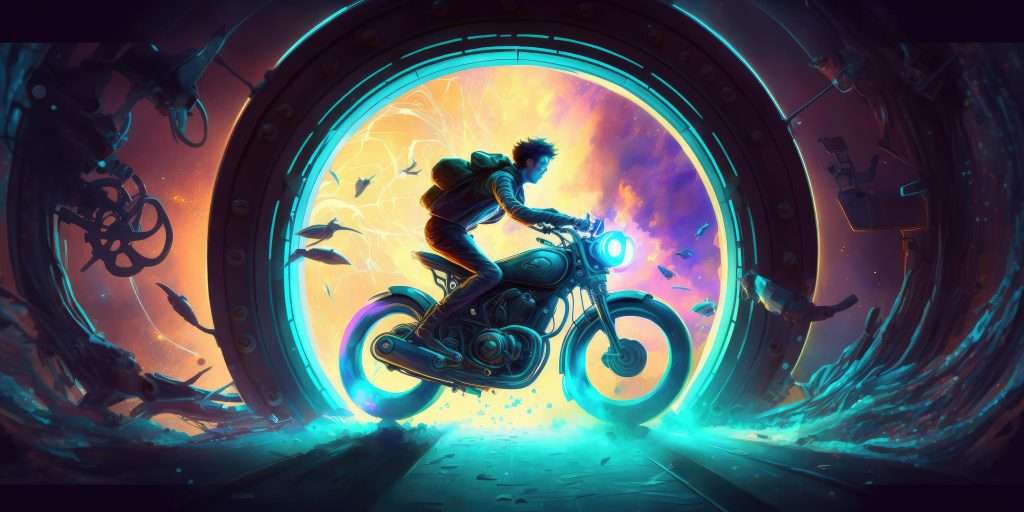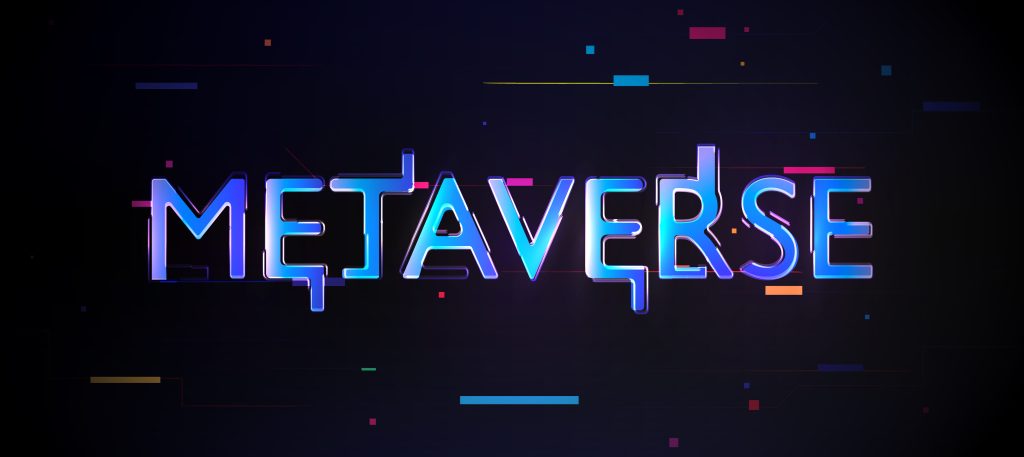We stand at the brink of a new era, where technology is no longer confined to the screens we stare at. It’s an era that promises to blend our physical reality with a virtual one. The buzzword that has encapsulated this innovation is what is the Metaverse? A concept that feels both novel and yet reminiscent of previous technological revolutions, the Metaverse is capturing the attention of everyone from tech giants to startups, offering endless possibilities and new frontiers.
The digital revolution has always been about bridging gaps, whether it’s connecting people across the globe or making information universally accessible. Now, as we explore the Metaverse, the objective seems to shift towards a seamless integration of our virtual and real-world experiences.
But as intriguing as this concept is, it’s fraught with complexity, challenges, and a muddling of understanding. What is the Metaverse? How did it evolve, and what’s the reality behind the hype? Let’s delve into the answers to these pivotal questions.
What is the Metaverse?
The Metaverse is a collective virtual space, populated by virtual worlds that are persistent, interactive, and interlinked. While it may sound like a new kind of video game, it’s far more encompassing. Whether it’s virtual reality that immerses you in an entirely digital world, or augmented reality that overlays digital components onto your real surroundings, the Metaverse represents a shift in how we interact with technology.
Many companies are jumping on the Metaverse bandwagon, aiming to create a new digital economy where users can create, buy, and sell goods. They envision a world where virtual assets like clothes or cars are not confined to one platform but can traverse from one to another. However, this idealistic vision presents an enormous complexity that is far from being solved.
The Metaverse is also facing a crisis of definition. Whether it’s referred to as a multiverse of metaverses, a hybrid-verse, or something else entirely, the term seems to be as fluid as the technology it represents. The lack of a concrete definition doesn’t hinder investment or exploration but does add to the mystery of what the Metaverse is and what it could eventually become.
The Evolution of the Metaverse: From Concept to Reality


The seeds of the Metaverse were sown decades ago. The earliest VR experiments can be traced back to the 1960s, but it wasn’t until the 1990s and early 2000s that VR began to gain momentum. With advances in computing power and graphics capabilities, the stage was set for immersive and interactive experiences.
Recent years have witnessed a resurgence in the VR industry, with tech giants like Oculus, Microsoft, and others taking the reins. The reach and capability of VR have expanded beyond mere entertainment, transforming into a powerful tool for businesses, industries, and educational sectors as well.
The Modern Metaverse concept gained traction when Facebook rebranded to Meta in 2021, resulting in a surge of investment and innovation. Yet, the current state of the Metaverse is still nascent, and its adoption has been slow. Challenges such as limited computing power, expensive hardware, and technological barriers remain.
The journey from concept to reality has been filled with hype, breakthroughs, and stumbling blocks. While the Metaverse may still seem like a distant dream to some, the relentless pursuit of this vision by major tech companies and innovators ensures that it’s a dream that won’t fade away.
We are merely at the tip of the iceberg, with technological advancements like improved VR headsets, haptic sensors, and large-scale persistent worlds awaiting us. The Metaverse is more than just a buzzword; it’s a roadmap to a future where our digital and physical lives are intertwined.
Infrastructure and Functioning: How the Metaverse Works


Blockchain technology is undeniably at the heart of the Metaverse’s core functioning. By enabling secure digital proof of ownership, we pave the way for consumers to protect their virtual assets. For instance, Decentraland utilizes Ethereum blockchain to manage ownership of digital real estate, allowing users to trade, develop, and monetize their virtual properties.
In a decentralized environment like the Metaverse, blockchain eliminates the vulnerabilities associated with centralized data storage, such as database management systems (DBMS). Projects like Flow, developed by the creators of CryptoKitties, offer a scalable blockchain infrastructure explicitly designed for the demands of the Metaverse.
▻ Artificial Intelligence: Bringing Lifelike Interaction
Artificial Intelligence (AI) serves as the engine driving numerous Metaverse applications, including AI-powered chatbots, robotic interactions, and content analysis. In virtual worlds like NeosVR, AI bots with lifelike avatars can facilitate various business functions, from sales to customer support, thereby enhancing the user experience.
▻ Human-Computer Interface (HCI): Bridging Real and Virtual Worlds
Human-Computer Interface technology ensures seamless integration of user activities into the virtual world of the Metaverse. Devices like Oculus Rift have revolutionized the way users interact with virtual environments, offering immersive experiences that feel real. HCI goes beyond mere entertainment, supporting diverse groups that need specialized training and interaction with complex computing systems.
Exploring Virtual Spaces: Navigating the Features of the Metaverse


The Metaverse’s virtual spaces allow users to create digital avatars, enabling unique expressions of self-identity. Platforms like VRChat provide customizable avatars, enabling individuals to emulate their real-life appearance or even their favorite fictional characters. With gamified features, users can enjoy a more dynamic and engaging experience as they explore virtual worlds.
▸Virtual Land: The New Frontier of Real Estate
The concept of virtual land, or parcels, has created unprecedented opportunities for business, gaming, and entertainment. With projects like The Sandbox, users can purchase virtual land using cryptocurrencies, and its value is determined by its size and location, such as proximity to a VR street for advertising potential. This decentralized approach to land ownership provides a lucrative investment opportunity within the Metaverse.
▸Immersive Experiences: AR and VR Integration
Augmented Reality (AR) and Virtual Reality (VR) technologies offer users a compelling and immersive experience within the Metaverse. Whether it’s virtual concerts, educational encounters, or professional meetings, platforms like AltSpaceVR provide a space where reality and the virtual world converge. These technologies are integral to transforming traditional online interactions into something more engaging and authentic.
Benefits and Opportunities: Embracing the Metaverse
The Metaverse breaks down barriers of cost, distance, or disability, providing more equal access to lifelike experiences. Whether it’s a virtual ride over the Grand Canyon or real-time social interaction with friends, platforms like Oculus Horizon Workrooms enhance social connections and enable shared experiences.
▹Efficient Testing, Training, and Collaboration
The Metaverse offers novel ways of training and collaboration that transcend geographical limitations. Medical professionals, for example, have successfully conducted complex surgeries with real-time assistance from colleagues around the world using VR headsets. Similarly, companies like PwC are leveraging the Metaverse for onboarding and training purposes, creating more efficient and interactive training modules.
▹Unleashing New Business Opportunities
Beyond gaming platforms, the Metaverse offers new avenues for businesses to engage customers. Fidelity Investments’ immersive experience in Decentraland and luxury fashion brands’ virtual stores exemplify how traditional industries can leverage the Metaverse to innovate customer interactions.
The Relationship between NFTs and the Metaverse
The relationship between Non-Fungible Tokens (NFTs) and the Metaverse is a complex and multifaceted one. NFTs have revolutionized the way we perceive value and ownership in the digital world, particularly in the Metaverse. They have become the backbone of secure transactions, creating scarcity, and monetizing assets in various virtual worlds.
One significant aspect is the security that NFTs bring into the Metaverse. Since transactions are recorded on the blockchain, the risks of fraud and theft are minimized. This creates a strong contrast with traditional methods of owning and trading virtual assets, which often leave room for scams and hacks. NFTs have emerged as a robust solution, fostering a more secure virtual environment.
Furthermore, the concept of scarcity, vital for virtual worlds, is enhanced through NFTs. They can represent unique items like one-of-a-kind digital art pieces, lending a realistic and exciting feel to the Metaverse. This aspect of NFTs helps in building a more tangible sense of value and reality within virtual spaces.
Monetizing assets is another critical advantage of NFTs in the Metaverse. They are instrumental in funding the creation of new content and setting up revenue streams for businesses. This has allowed the Metaverse to become a more sustainable place for both creators and businesses.
However, it’s essential to recognize that the use of NFTs in the Metaverse is not devoid of challenges. Concerns over representation of ownership, controlling inflation, and establishing trading mechanisms need addressing. Despite these hurdles, projects are already in progress to create solutions, promising an even more seamless integration of NFTs within the Metaverse.
Top Blockchain Metaverse Projects: A Curated List
- Decentraland: A blockchain-based virtual environment, Decentraland, offers exciting opportunities to build, trade, and explore virtual worlds. With its digital ledger, it stands as a cornerstone for unique virtual experiences.
- The Sandbox: This 3D virtual world on the Ethereum blockchain offers interactive creation opportunities. With its SAND token, The Sandbox provides diverse ways to engage and profit within the virtual landscape.
- Bloktopia: An immersive experience through virtual reality, Bloktopia’s 21-story structure represents the 21 million Bitcoins in circulation. From designing avatars to purchasing virtual real estate, it offers varied avenues to engage and earn.
- Meta Horizon Worlds: This VR social app offers a space for socializing, business meetings, and virtual exploration. It does not utilize blockchain technology but offers a rich array of features to content developers.
- Metahero: Focusing on bringing physical objects into the digital realm, Metahero employs ultra-HD photogrammetric scanning technology. It enables users to explore various aspects of the Metaverse with 3D avatars.
Challenges and Ethical Concerns: Navigating the Metaverse Safely
- Ownership Representation: Determining ownership in virtual worlds can be challenging, as the boundary lines of virtual ownership are often blurred.
- Inflation Control: Ensuring that the use of NFTs does not create inflation within the virtual economy is a key concern that must be managed.
- Trading Mechanisms: Deciding whether there will be a central exchange or direct trading between users is another complex issue that requires careful consideration.
- Legal Aspects: Understanding the legal implications of NFTs, including securing transactions and abiding by regulations, is vital to navigating the Metaverse safely.
- Marketing Challenges: Effectively marketing NFTs to the right audience requires a blend of creativity, technical expertise, and strategic planning.
The Future of the Metaverse: Potential and Predictions
The Metaverse, in conjunction with blockchain technology, is poised to transform the way we interact, socialize, and conduct business in virtual spaces. The integration of platforms like Decentraland and The Sandbox showcases how immersive and engaging these worlds can become.
While NFTs are playing a crucial role in enhancing security, creating scarcity, and monetizing assets, they are also posing new challenges that need to be solved. With constant innovation and strategic planning, the path ahead seems promising.
The potential for growth, exploration, and revenue generation within the Metaverse is massive. With platforms constantly evolving and new projects coming into existence, the future of the Metaverse appears bright and filled with endless possibilities. This growth is not just about design or creativity; it’s about the convergence of technology, strategy, and vision. The Metaverse’s future is indeed a thrilling frontier waiting to be explored, and we are just at the beginning of this exciting journey.









